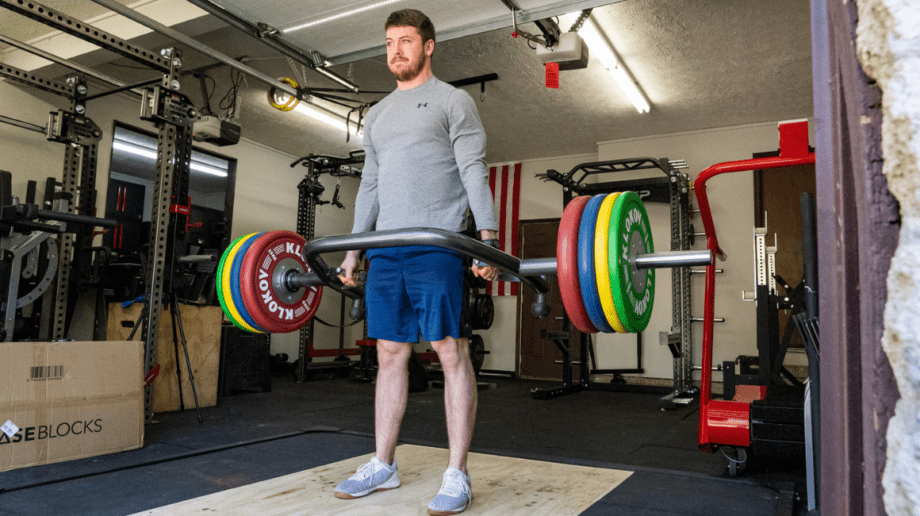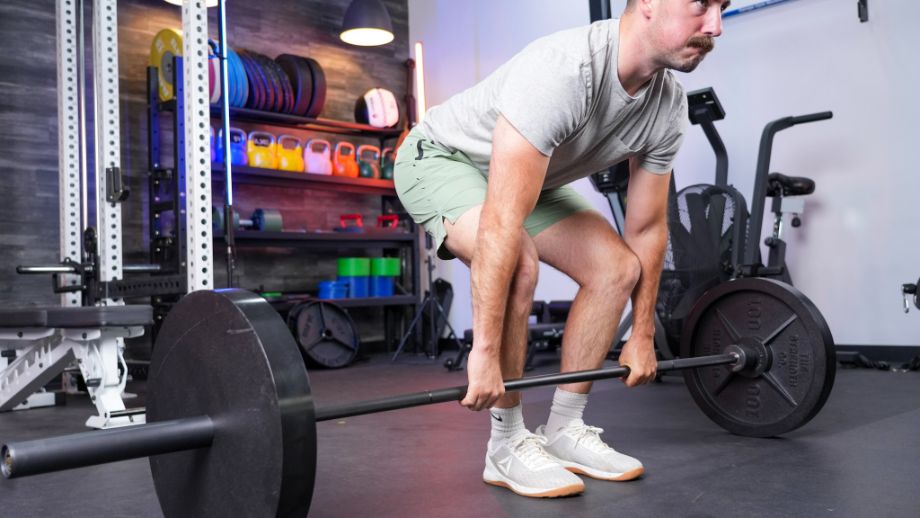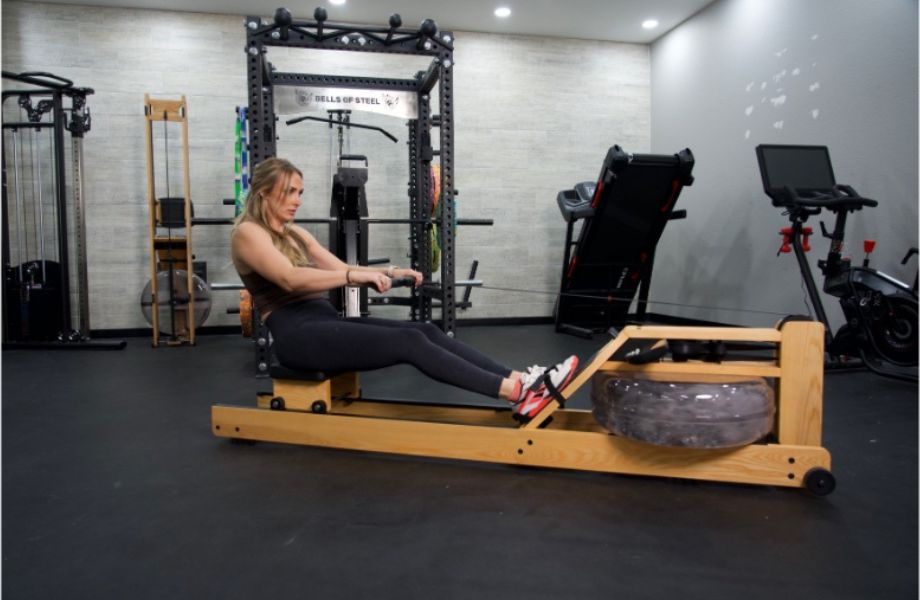The trap bar is one of the most popular specialty bars on the market. Most commercial gyms in the country have one and a majority of home and garage gyms should have one.
If you’re building a home gym on a budget, you may be wondering if you really need a trap bar, or if a barbell will be enough for your workouts.
To help you decide, we’ll be reviewing some of the biggest trap bar benefits, so you can decide if you should add this specialty bar to your workouts or if you’ll be okay to do without.
Trap Bar Benefits At a Glance
Deadlifts using a trap bar strengthen the glutes, hamstrings, and back. The major advantage of using a trap bar is you exert less stress on the lumbar spine. Plus, trap bar deadlifts are easier to learn and need less technical expertise than barbell deadlifts.
The main benefits of a trap bar include:
- Great versatility
- It can be used for deadlifts and deadlift-type movements
- It takes stress off the triceps
- It provides a different stimulus than a barbell
4 Reasons to Buy a Trap Bar
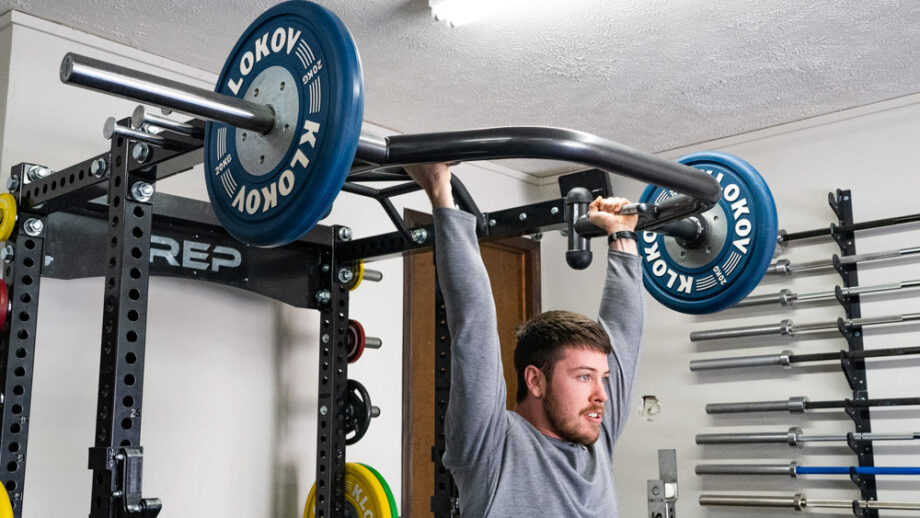
Reason #1: The Trap Bar Has A Lot of Versatility
For the purposes of this article, when I say the word combo “Trap Bar,” I’m using it as an all-encompassing word combo to refer to both the traditional style of trap bar as well as the newer open styles. You can definitely perform more activities with the open style, but the closed style still has much versatility as well.
Probably one of the greatest aspects of the trap bar is the said versatility. You could think of it as a barbell that doesn’t get in the way. With a trap bar, the only contact you will usually have with the bar is only where your hands are gripping. Since no part is touching your legs at the top and bottom of the movement, this opens up your options for what you are able to do with it.
Farmer’s Walks are a great exercise to do with a trap bar. Since the weight is one solid piece, you will have slightly more stability during the walk, meaning that you can increase the isometric output of your “core” muscles compared to using dumbbells or separate farmer’s handles.
Other walking or stepping type motions include Trap Bar Lunges, step-ups, Farmer’s medleys, etc.
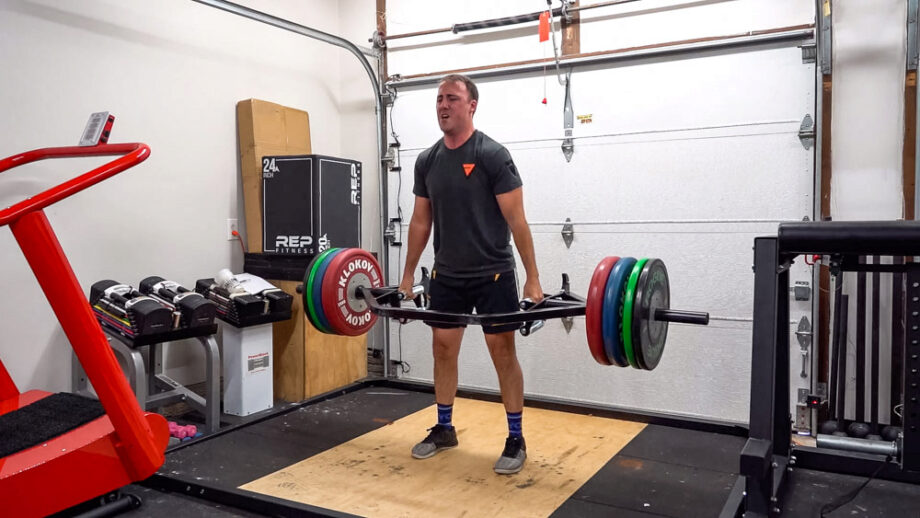
Some great lower-body stationary movements you are open to doing with a trap bar include seated deadlifts, normal deadlifts, RDL’s, “Dead-Squat” deadlifts (more on this later) etc. Since your knees have nothing preventing them from moving forward as they would with a straight bar, you have more variability to choose from during these deadlift movements. You can perform a normal deadlift (with pretty close to the same body positioning as your would with a barbell). Keep note though that during a straight bar deadlift, the bar is against your legs at the top which aids in trunk stability and prevents excessive movement in your lower vertebrae. With the trap bar, no part of the bar is touching your legs at the top, so more mindfulness is required to prevent excess/unwanted spinal movement at the top.
Nowadays many trap bars are made to be rackable, so you can even perform rack pulls, reverse band deadlift movements, etc., as well. Also with the rackable (specifically open style) trap bars, you can even perform Giant Cambered Bar Style Squats!
Several cool upper-body trap bar options include Neutral Grip Presses (these can be very cool, but the lack of stability at the top/bottom of the movement will be a problem for many lifters joint wise), bent-over rows, and of coarse “Trap” work.
Trap bars are wonderful for shrugs! The muscular attachments of the trapezius muscle dictate that you are meant to “shrug” towards the back of your head (not your ears, as you see many fitness influencers do). What is cool about the trap bar is that since it aligns your arms at a slight angle away from your body, this will more directly align with the pull of a majority of the diagonal trap muscle fibers. This means the upper trap muscle fibers are in optimal position to directly fight the resistance (provided by the trap bar, weights you put on said trap bar, and gravity).
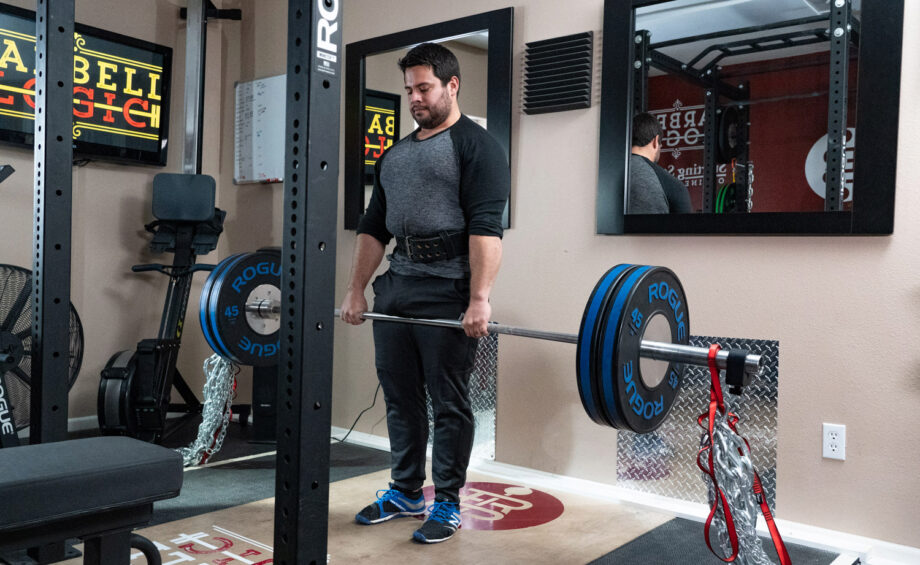
With a straight bar during shrugs, you are required to have more internal or external motion at the shoulder, which can be a problem for many lifters (even if they choose to grab wider). A trap bar works better since it will put most people in a better position away from both end range internal or external rotation at the shoulder (many call this position “neutral”).
With heavy dumbbells during a shrug movement, your arms will end up hugging your sides – which will restrict the shrugging motion (unless you all your elbows to bend). Trap bars don’t have this problem – your arms will stay angled out away from your sides regardless of how heavy you go.
Even if you decide to never “deadlift” with a trap bar, the versatility of the other movements you can perform with it will cause most lifters to want to buy one!
Reason #2: The Trap Bar Can Be Used for Deadlift and Deadlift-Type Movements
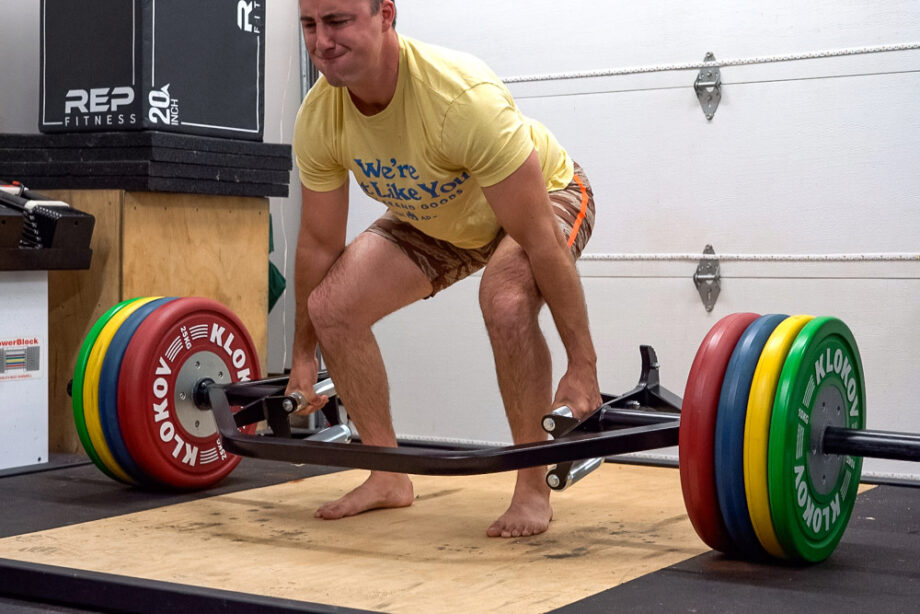
As stated earlier, the trap bar allows you to perform a multitude of deadlift type movements. In all honesty, the only deadliftish movement that you can’t perform with a trap bar is sumo (but that isn’t too big a deal for most lifters).
In regards to deadlifting with a trap bar and knee positioning, you have more options with where to hold them. There is no straight preventing your shins from sliding forward, so you can either be more “quarter-squatty” or utilize a more “straight-bar deadlift” position when performing a trap bar deadlift.
For a “quarter-squatty,” “heavypantspull” (coined by Starting Strength/Barbell Logic coach Dr. Jonathan Sullivan), “dead-squat” style of trap bar deadlift, you are able to utilize your quads more at the bottom of the pull and maintain a much more vertical back angle. This makes the lift resemble more a squat than a deadlift, even though the bar is in your hands. This can be helpful for some lifters psyche if they just want the feeling of having heavy weight in their hands while performing a lift that many would consider a deadlift (since your pulling it from the floor).
Depending on perspective and goal of the exercise, a “quarter-squatty” deadlift is not necessarily a “good” choice for an exercise, but some people like loading up and lifting heavy things regardless of whatever it is they want to specifically strengthen internally. Think of the“Car Deadlift” as you see in many strongman competitions. You don’t perform a car deadlift for health reasons. You perform it to say that you can “Deadlift a car!” And since a trap bar can somewhat mimic that, that’s the reason many will choose to do it.
Another aspect of the knees forward/more vertical back style of the trap bar deadlift is that for many, this will make something that “looks” like a barbell deadlift much easier to learn. This can be a great thing, especially for elderly people, who want to be able in the simplest sense to gain confidence in their ability to dead lift a weight off the ground. A barbell deadlift can be harder for many to learn, and the trap bar many just be what they need to give them some confidence.
A more skilled lifter may choose to disregard the knees forward trap bar style of deadlift and go with something that more closely resembles the body positioning they would have if they were using a straight bar (this will be a more hip-dominant style of pull). This can be a strategic option for a seasoned lifter.
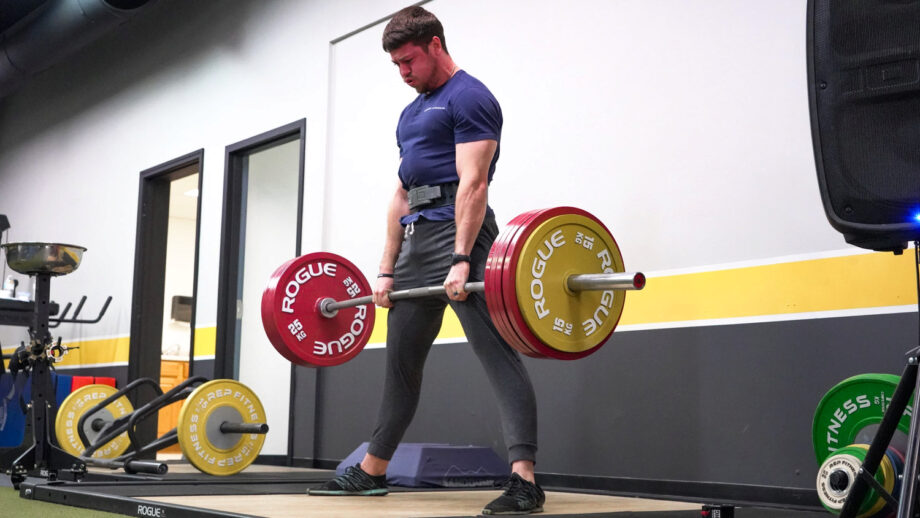
In a proper straight bar deadlift, the bar will be positioned over the middle of your foot from heel-to-toe with the bar maintaining contact with your shins. The barbell has to stay in front of your legs with minimal forward knee travel, “butt back” positioning to maintain adequate hip dominance and set spinal extension. Using a trap bar to mimic a proper straight bar deadlift, an invisible line connecting the middle of your grip (your middle fingers) can be drawn and it too will be positioned over the middle of your foot from heel-to-toe. The invisible line will also maintain contact with your shins at the bottom.
So far, everything seems to be about the same for both straight bar and trap bar. With the trap bar, you won’t have to worry about the bar scraping your shins. Also, since you will be in a neutral grip, this will take the stress off many lifter’s shoulders (and perhaps biceps, depending on the trap bars’ width).
At the top of the movement, there are some important things to note, however. With a straight barbell at the deadlift lockout, the barbell is against your things in a very stable position. With the trap bar at the top of the lift, the imaginary line going through both of your middle fingers will be centered inside of your thigh (not in front and against it as with the straight barbell). This means there is a slight moment arm change specific to your hip, knee, spine, shoulder, scapular joints, and integrative relationships at the top (a moment arm change means that there is also a change in the resistance specific to each joint involved).
Also, since the trap bar is floating at the top, there is less stability for the muscles around your trunk, which means you must be more mindful to prevent excessive movement at the top so as not to tweak anything low back-related.
I say this because even if you try to mimic as much as possible your trap bar deadlift form to a proper straight bar deadlift form, both lifts will still have slight yet important differences, essentially making them two different styles of deadlifts when all variables are taken into consideration (shoulder/scapular relationships, low handle/high handle, etc.).
Reason #3: The Trap Bar Takes Stress Off the Biceps
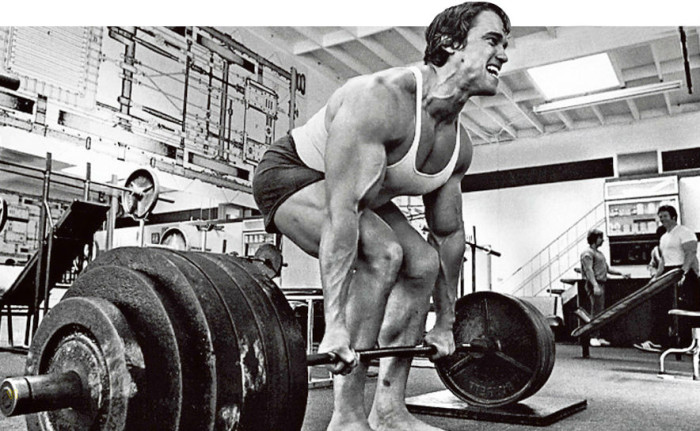
For many lifters with specific joint issues in the shoulder/scapular region, a trap bar can be a good choice since it will put the region of the body stated in more neutral positioning. Many lifters can better tolerate deadlifts if their shoulders are given some slack in regards to extreme ends of external and internal rotation ranges.
Also, the neutral positioning of the trap bar can be a big plus grip-wise. Many lifters will use what is called a mixed grip (one hand over/ one hand under) with a straight bar when they get heavy enough. This can sometimes be a problem since the hand you grab under with changes the length of your lat muscle relative to the other side, which in term will change the tension of the lat muscle overall. Since your lat muscle connects to the low back area at the thoracolumbar fascia, the tension pulling on your low back on this side will be slightly different than on the other, which may not be good for some people.
The neutral grip position of the trap bar doesn’t have this problem to deal with (as long as you grab evenly). Also, the main reason lifters used a mixed grip with a straight bar is solely so they can use more weight. The neutral grip of the trap bar is a strong position to be in grip-wise (similar to mixed grip), so more weight is likewise easier to manage.
To reiterate, the neutral grip of the trap bar allows you to manage more weight grip-wise, allows symmetrical tension in the low back region, and feels much more comfortable for many lifters with shoulder/scapula issues.
Reason #4: The Trap Bar Provides A Different Stimulus Than A Barbell
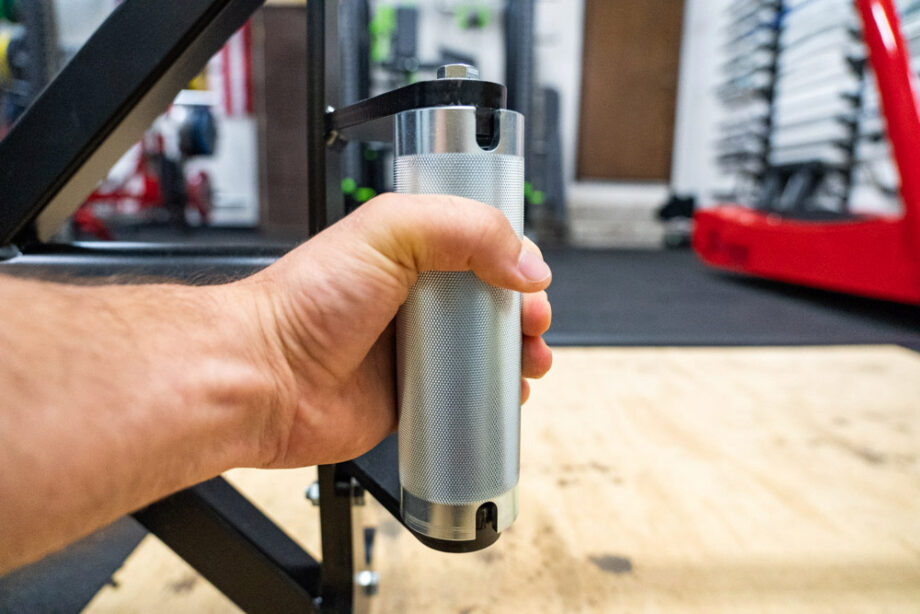
Similar to the points made above, a trap bar deadlift is different than a straight bar deadlift, even when you are trying to mimic the physics as much as possible. And for many people, this is more than fine. “Life” isn’t always practiced with a barbell, so having the option in your gym to lift with something fun, new, and different like a trap bar can be a good thing for you. Practicing with the instability the trap bar provides at the top of a deadlift motion can be a novel experience and a slight skill you may wish to cope with. It may even cause some lifters to be more mindful of what is going on with the trunk musculature when they switch back to pulling with a straight bar.
This may be just the stimulus someone needs to better learn how to control the inertial effects of the trap bar mass itself – to be more mindful at the top and not allow your acceleration of the trap bar to cause rotational momentum that could potentially move your spine and low back stuff in positions/alignments that the joints may not be able to tolerate.
3 Reasons to Not Buy a Trap Bar
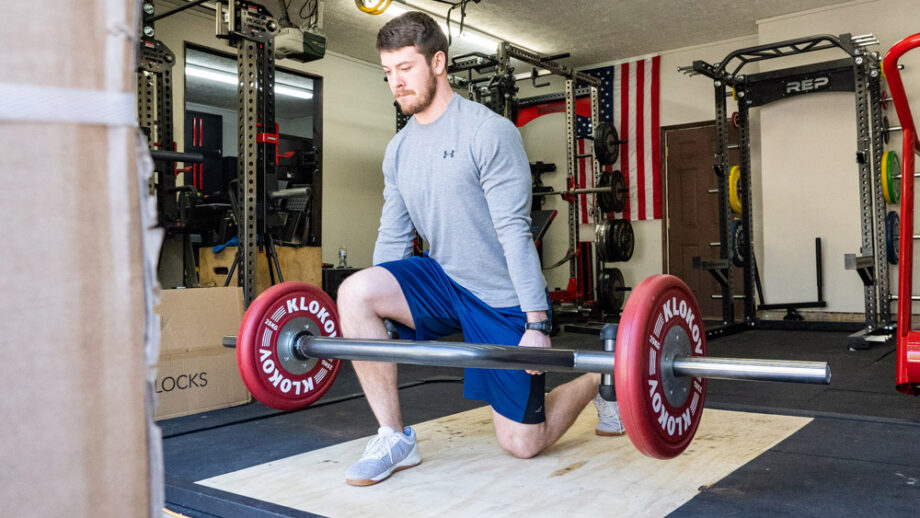
Reason #1: The Trap Bar Is Less Stable
A few problems arise for the trap bar during a deadlift type movement, regardless of whether it is “heavypantspull” style or the straight barbell mimic. At the top of a deadlift performed with a trap bar, the bar is in a floating position with your only contact to it being your hands (grip). This is an unstable position to be in (not saying it as necessarily a bad thing), and you are having to focus on not wobble with the weight.
Those with “balance” issues may have trouble with this position. Or if someone isn’t all the way in control of the trap bar at the top, this could be a problem for you low back and hip stuff if it is not prepared for the slight horizontal shifts that may be involved in trying to steady the weight. For some, this could possibly be a safe and fun form of an isometric exercise if that is the goal. This would not be advised for elderly populations or those not able to tolerate the variable forces involved during any wobble they will have to deal with at the top.
This is why a straight bar for deadlift may be preferred for many. Since the bar is cantilevered against your thighs at the top, this prevents wobble from the mass of the barbell itself. Also, it may be easier to teach someone how to not excessively extend at the spine with the barbell against their thighs in top position because once they fully stand up, any excess extension beyond that in not necessary and would most likely be detrimental to the joint staff of the low back area.
Reason #2: The Trap Bar May Have Less Stimulus For The Hips
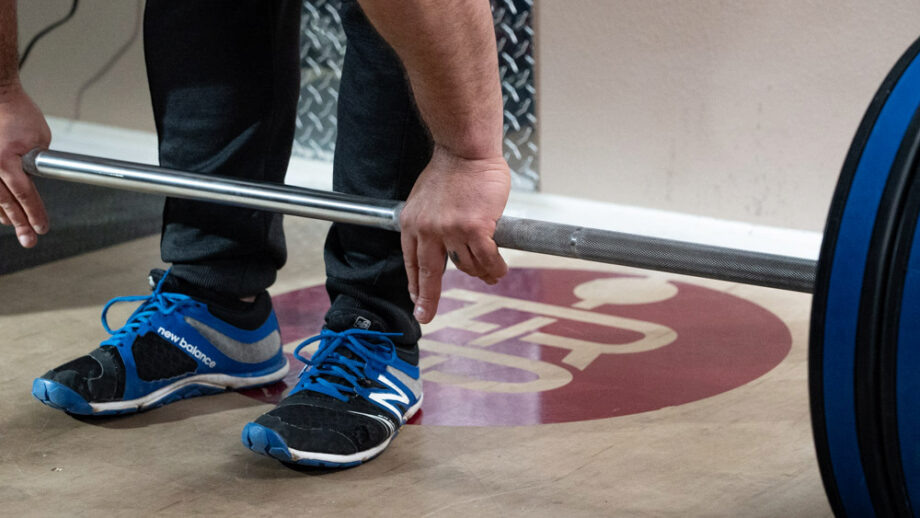
This all depends on the goal of the exercise. If the goal of a deadlift is simply to lift as much weight as possible, then the trap bar may be your go-to bar to utilize (this is not necessarily true, but many assume this to be so)! A goal such as this is what we like to call an “external performance” based exercise. Good analogies for explaining external performance would be doing whatever it takes to get the goal, score the touchdown, lift the weight, sacrifice your body for the number on the board, etc. In this case, the trap bar will most likely allow you to move more weight, but will also be decreased stimulus specific to the hip musculature.
If the goal of a deadlift is “internal performance” oriented, then you will need to lay down some parameters at what specifically you would like internally strengthen and why. Internal performance could be explained using the analogy of a kipping pull-up versus a health-minded pull-up. A kipping pull-up serves for the purpose of simply “doing more reps.” This is external performance-based, as the reason for the kip is to crank out a higher number of reps, regardless of what is happening in the joint or if the stimulus is optimal to strengthening the tissue involved. A health-minded pull-up first ask the question, “Why am I doing pull-ups in the first place? Is it just to get a higher number? Or am I trying to willfully stimulate the tissue involved in order to increase the health and integrity of all the stuff (muscle, tendon, ligament, bone, etc.) surrounding my shoulders and scapulae?”
To reiterate, always ask yourself what the goal of the exercise is in the first place. And just to point out, the terms internal/external performance are common vernacular in the Resistance Training Specialist® created by Tom Purvis in Oklahoma City, OK. Highly recommended.
Using the movement of a barbell deadlift/trap bar deadlift as an example, the thought process for making it an internal performance exercise could be that you would probably want to bias the lift in such a way to effectively overcome the weight with optimal mechanics in accordance with your own structure. This would allow you to use a high degree of muscular output that is specific to the skill that is the multi-joint exercise of deadlifting.
The physics of a deadlift see to it that once the bar (straight or trap bar) is heavy enough, the barbell (or invisible middle line of the trap bar) will travel in a vertical line approximately over the middle of the foot (your center of balance). Examining a barbell deadlift with a straight barbell, a heavy pull also means that your shoulders will be in a position just forward of the bar until the very top of the movement. With a trap bar, this is not necessarily true as you do not have a barbell preventing your tibias from sliding forward. If your knees move forward, so do your hips – which means your back will move from a more horizontal position to being more vertical, which also means your shoulders will possibly move behind the vertical path of travel. Phew.
But say you match up your trap bar mechanics to be nearly in the same position as you would with a straight bar. Taking trap bar width out of the equation (which most likely will affect overall torque relationships), all should look equal resistance wise up until the top of the pull. At the bottom, the greatest amount of resistance will be specific to the hip musculature.
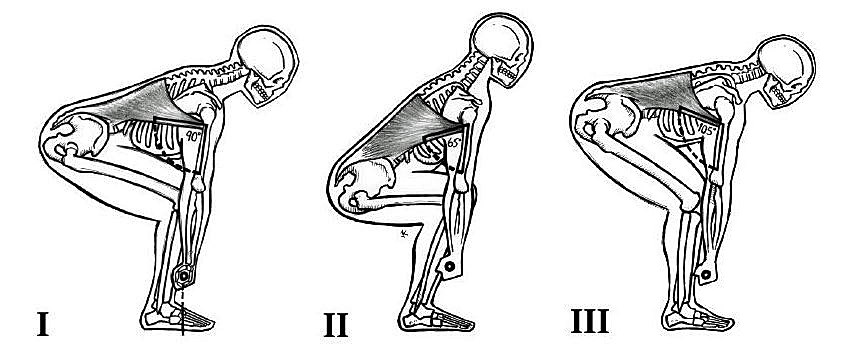
Since the equation for resistance is weight multiplied by a distance called moment arm, let analyze the resistance specific to each joint’s associated musculature in our example.
The moment arm is an invisible line drawn perpendicular from the line of force. In the case of the deadlift, the line of force is vertical and corresponds with gravity. In our example of both the straight and trap bar styles of a hip dominant deadlift, the moment arm to the hip is 20” and the moment arm to the knee joints is 3”. Each spine joint segment has its own specific moment arm, but for our purposes we will only analyze the moving joints, since we will assume that the lifter will be lifting with a rigid spine.
Since the bar weights 300 LBS, let calculate the resistance at the hip and knee.
Resistance (Torque) = Moment Arm (MA) x Weight +/- inertial effects
*We won’t consider inertial effects for the time being as to simplify our discussion.
Resistance (Torque) at Hip = 20” MA x 300 LBS = 6000 inch LBS (Torque)
Resistance (Torque) at Knee = 3” MA x 300 LBS = 900 inch LBS (Torque)
For every inch you pull, the respective moment arms will be getting shorter and shorter. Since the moment arms specific to each joint will change throughout the lift, this, in turn, means that the resistance must also change.
Since we are deadlifting to mimic the straight bar deadlifts hip dominant style of pull, everything should be nearly equal up until the top.
At the very top of a deadlift with a straight barbell, there is a minimal moment arm-specific to the knee. Since the bar is against your thighs at the top, the moment arm-specific to the hip joint is very small but real, which means there is still resistance at the top. In our example, let’s say the moment arm is 1”. This means the resistance specific to the hip joint at the top is 1” MA x 300 LBS which equals 300 Torque (This is how much the internal force producers around your hip joint are producing to maintain the barbell at the top of the movement.
At the very top of the hip dominant style of deadlift with a trap bar, there are no thighs to prevent the bar from hovering over the vertical line of force. What this means is that the moment arm will be zero inches, which means there is no resistance specific to your hip joint at the top of the movement when you’re are balanced at the top (0” MA x 300 LBS = 0 Torque). This means slightly less strengthening overall specific to the hip joint when compared to a straight barbell.
If you are wanting to bias your hip musculature as much as possible, the straight bar deadlift will be more effective at doing so than the trap bar (regardless if you’re doing the hip dominant style or the more “squatty style”). All the “squatty style” version of a trap bar deadlift does is give more of a moment arm to the knee joints musculature and less to the hip. If you want to bias the quads, go for it! But if you want to bias the hip musculature, not the best idea.
Reason #3: You Don’t Need a Trap Bar To Be Strong Or Healthy
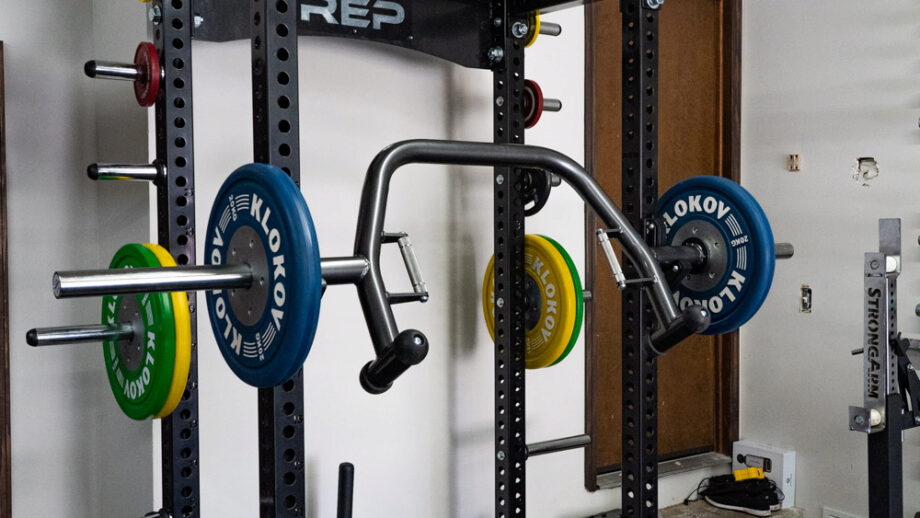
For those who only have so much room in their garage, a trap bar is surely not required to be strong and healthy. A trap bar is definitely fun and opens the door to specific lifting scenarios (accessory exercises, specific deadlifting profiles, etc.), but many lifters probably could get by without one. Training should always reflect the goals, mindset, and practical management of all the lifter has to use. After careful consideration and reflection, if a trap bar does not seem necessary to what you are training for, then it probably is not needed. This is how any piece of equipment should be examined, to be honest.
History of the Trap Bar
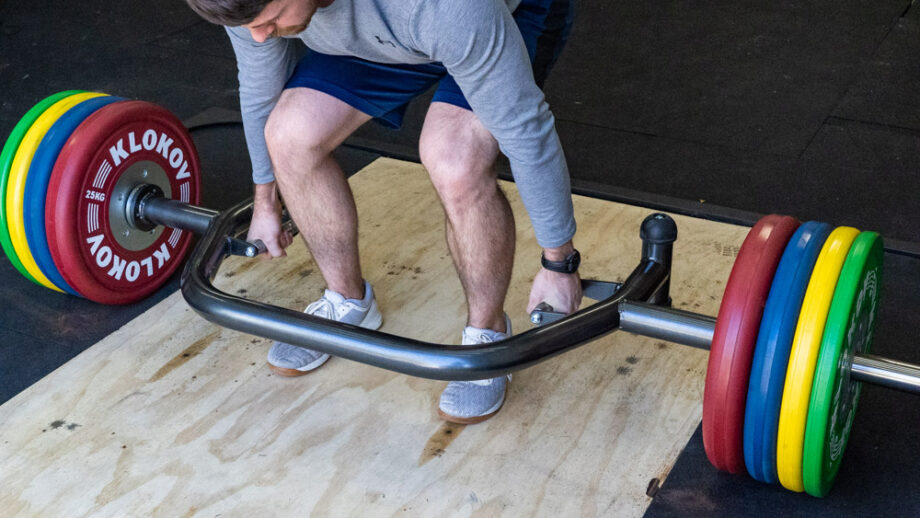
The hexagon barbell. The “Strongman Hula-Hoop.” The Al Gerard Bar. The “Heavy Pants Lift.” The DeadSquat Bar. These are a few of the names we have heard a trap bar be called. It has now been around the strength scene for some 30+ years now and is considered by many to be the most valuable specialty bar.
The high value of the trap bar for most lifters is that it is a strategic but different play on the barbell deadlift/squat motion. The diamond-shaped bar was invented by powerlifter Al Gerard. Al was an innovator who wanted to find a way to keep training after several bouts of recurring back issues. The “trap bar movement” started out with him standing on a box and grabbing 2 heavy dumbbells by his sides, lifting in what looked like some sort of deadlift/squat move. Then he began thinking that if he had a way to fix the dumbbells together, it would most likely add some strategic stability and aid with grip. He sketched the original diamond design down on some paper and welded it into action. Voilà .
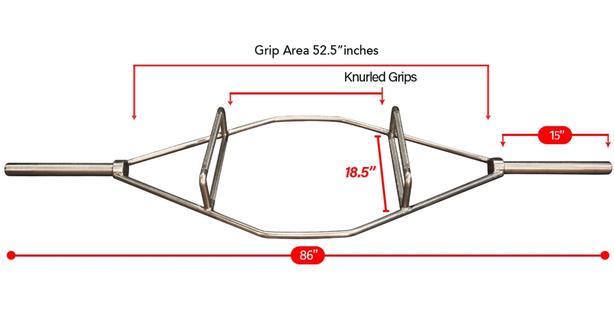
For years, the diamond shape of the trap bar changed very little from its mainstream debut in 1986. In the early 2000’s, some companies picked up on the idea and started tweaking this diamond pattern in favor of a hexagon. The hexagon shape provided the lifter with perhaps a little extra room for their stance and foot positioning. Besides that, little changed. The trap bar remained as a very basic specialty barbell, and rarely did a company move away or experiment with that basic geometry.
In the past couple of years, we have begun seeing an innovative shift in regards to the trap bar design. Instead of the diamond shape, barbell manufacturers started working with what we call the open concept. Instead of being enclosed by the trap bar hexagon in all directions, several barbell manufacturers started removing the back side while attempting to counterbalance the other side. What this did is make the trap bar open, more approachable, and added more versatility to what could be done with it.
What this means today is that if you went to go buy a trap bar, it wouldn’t be as simple as it would be just a couple years ago. We have more options now, more manufacturers, and more ways to look at the trap bar itself. Is it a good bar to buy? Is it necessary for most garage gym owners? For some? Let’s be a good judge and weigh the pros and cons.
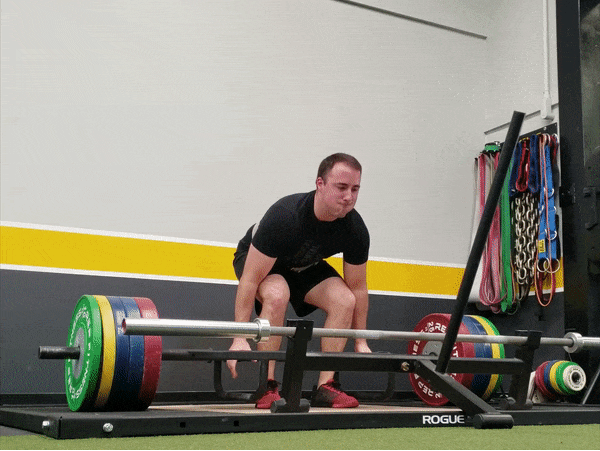
Bottom Line
The Trap Bar is an awesome piece of equipment for those that want to add variety to their training, but, it’s not required. There are many pieces of equipment that could likely be reasoned to be purchased before a trap bar, but at current prices, trap bars are rather cheap to buy.
If you have a home gym, a trap bar will be a great addition; same to a commercial gym. Just remember, the best piece of equipment is the one you actually use.
Which Trap Bars Do We Recommend
There are A LOT of trap/hex bars on the market today. So many, in fact, that it can be pretty difficult to make sense of them all. We’ve detailed all of the best trap bars currently available in our Trap Bar Guide that you can find here.
This said we thought it would be beneficial to summarize some of our recommendations for you here.
Top Pick
Rogue TB-1 Trap Bar 2.0
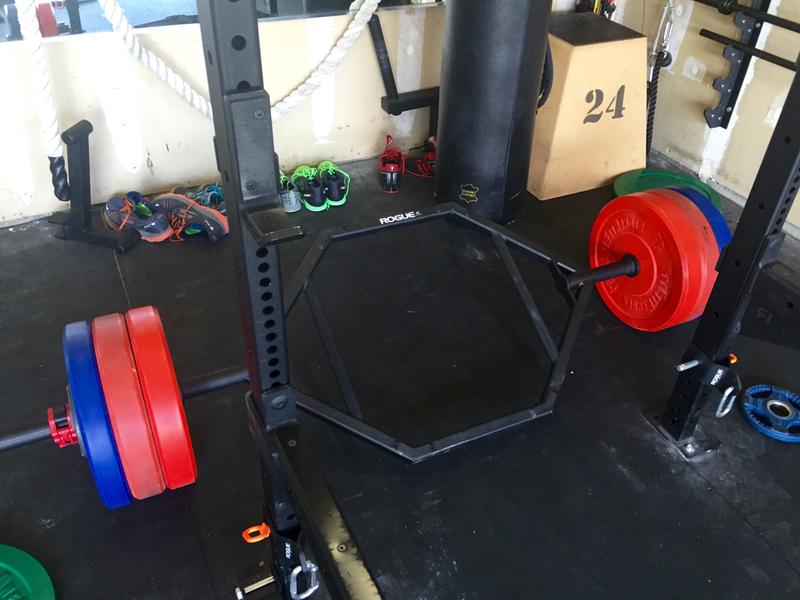
Product Highlights
- Closed design
- High weight capacity
- No whip
- Updated, precision sleeve construction
Pros & Cons
Pros
- Reasonable price for a specialty bar, at $325
- Powder-coated
- Aggressive knurling
- Rackable
- Consistent knurling throughout the handles
Cons
- Knurling may be too sharp for some
- Lack of knurl marks makes balancing the bar tricky
- Powder-coated sleeves chip easily
Bottom Line
The Rogue TB-1 Trap Bar 2.0 is an excellent choice for home gym owners who want a rackable hex bar that is built to last.
The Rogue TB-1 Trap Bar is our pick for the best trap bar for most people. There are a wide variety of trap bars currently available with just about every feature you could imagine, however, with more features comes a higher price. On the other end are lower-priced trap bars that are certainly worth looking at (in fact, in many cases we’d suggest going with one of our budget picks), but lack some of the refinements and durability features of the TB-1.
Although the TB-1 isn’t the best piece of equipment Rogue makes, it does get the job done at a great price. Featuring an aggressive knurl, thick and rigid square tubing, long enough sleeves to load it up with iron or bumpers, a lifetime warranty, and a decent price are what make the Rogue TB-1 our top pick.
In addition to the inherent properties of the bar, it’s also rackable. Some people don’t think it matters if a trap bar is rackable, but those in a home gym know the importance of having equipment that is versatile. Thanks to its rackability (is that a word?) the TB-1 can be used for presses or rack deadlifts in addition to the movements available outside of the rack.
Despite the Rogue TB-1 being our top pick, it could honestly be improved in many ways and we expect Rogue to either update it, or it to be unseated by a competitor rather soon.
Upgrade Pick
Kabuki Strength Trap Bar
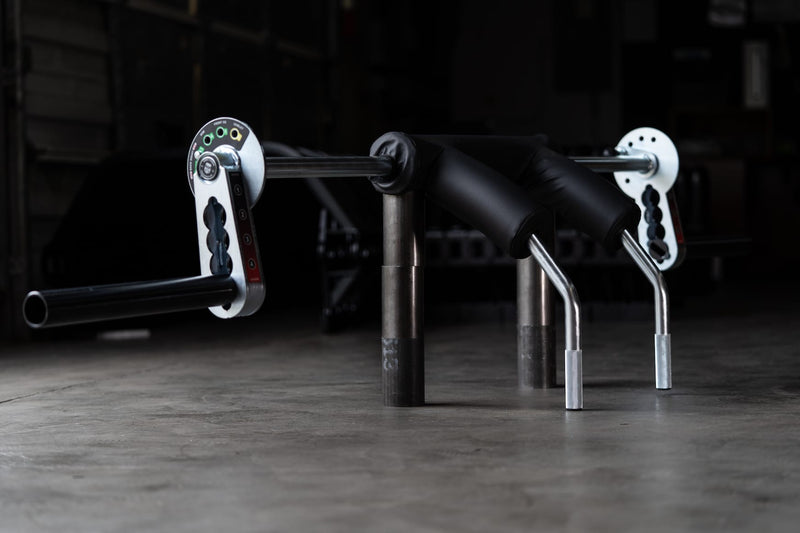
Product Highlights
- Built-in bar jack
- Open-ended design
- Multiple grip options
- 16.5-inch loadable sleeve length
Pros & Cons
Pros
- Open-end design makes it much more versatile
- Angled legs make it easy to load the bar
- Swappable grips
Cons
- Expensive, at around $700
- Feet can easily scratch floors
- It’s rackable, but won’t work with j-cups
Bottom Line
If you have the money, this is the best trap bar you can get. It is pricey at around $700, but it lives up to the hype with angled legs, swappable grips, and more.
The Upgrade Pick was an easy choice in the latest specialty bar from Kabuki Strength, the Kabuki Strength Trap Bar. Chris Duffin, the creator of the Duffalo Bar and New Gen Power Bar has been on an absolute tear lately. The Trap Bar from his company Kabuki Strength is their latest release, and quite possibly their best yet.
The number of useful features that are packed into this bar makes you question why it hadn’t been thought of sooner. Combining the open-end design that is by far the best way to make a trap bar along with interchangeable handles that feature the same knurling as their top-of-the-line power bar, this is the last trap bar you’d ever have to buy. We chose the Kabuki Trap Bar as our Upgrade Pick due to its significantly higher price tag, but also a wealth of features. If you have the money to spend and want the best, this is our recommendation.
See our full review of the Kabuki Strength Trap Bar here.
Budget Pick
Titan Fitness Hex Trap Bar
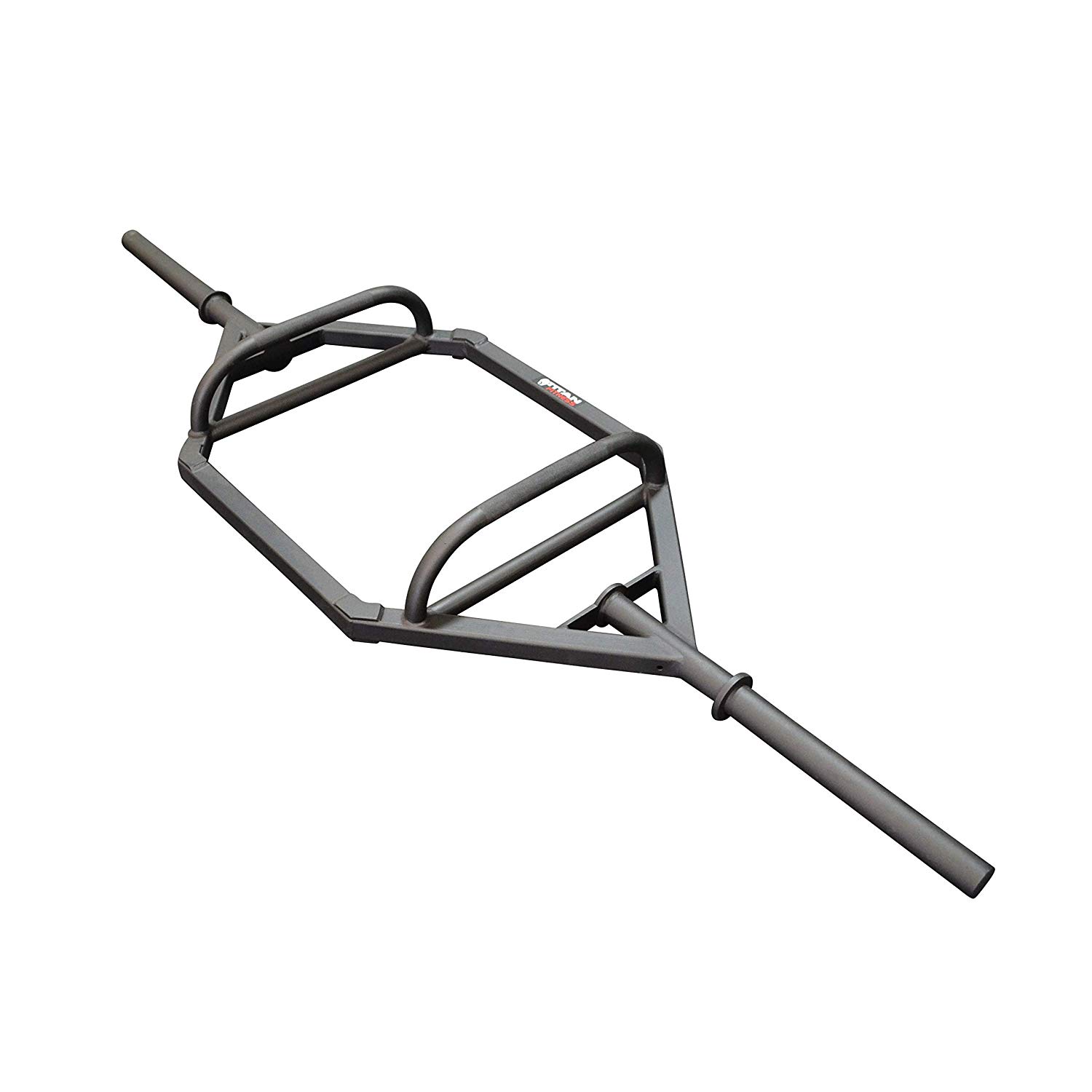
Product Highlights
- Rackable
- Matte black finish
- Priced well for those on a budget
Pros & Cons
Pros
- Priced affordably
- Matte black powder coating
- Good knurling
- Heavy duty
- Rackable
Cons
- 1-year warranty
- No knurling on the bottom handle
- Some reviewers say it isn’t rackable
Bottom Line
If you're on a budget and looking for a hex trap bar, this one from Titan is hard to beat.
If you’re on a budget, or you just don’t feel like spending an enormous amount of money on a trap bar (we don’t blame you) then we would suggest the Titan Fitness Hex Trap Bar as our Budget Pick.
The Titan Fitness Hex Trap Bar is very similar to the older brother of our Top Pick, the Rogue TB-2 Trap Bar. We’ve used and abused the TB-2 for years now and still recommend it to many. The Titan Hex Trap Bar is a good bar, but as with most Titan Fitness products, it doesn’t come without its quirks. For instance, it’s listed as rackable, but many users have reported it’s not and the bottom handles are not knurled even though the top ones are. Despite this, for the price, this is an awesome trap bar and one we foresee many adding to their garage gym.
If you’re on a budget but still want a trap bar that can compete with much more expensive competitors, this is your best bet.
Ultra Budget Pick
CAP OB-91HZ Mega Hex Bar
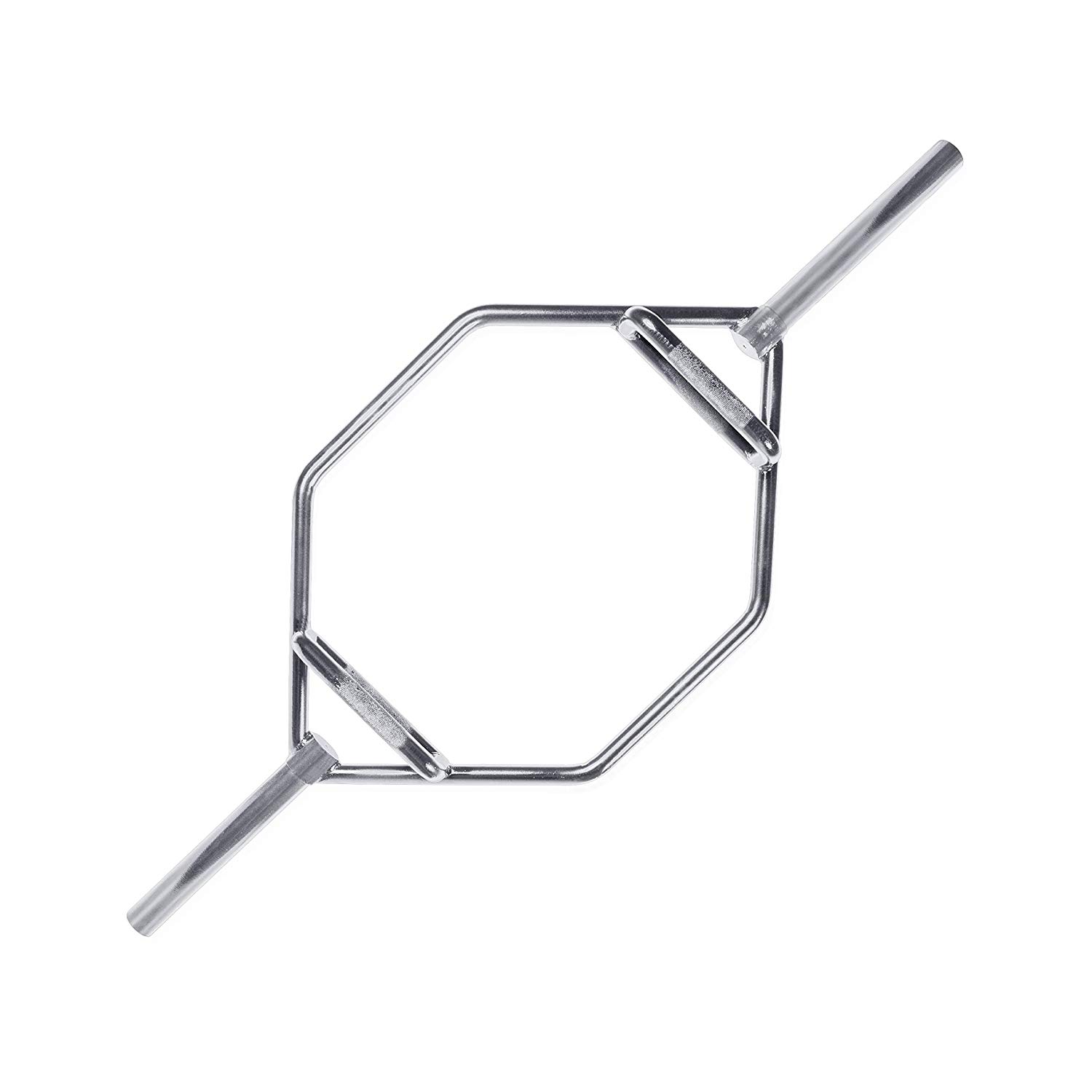
Product Highlights
- #SPECS – Bar Dimensions: 56″L x 24″W x 6″H. Bar Weight: 75 lb.
Pros & Cons
Bottom Line
If you can’t afford our Budget Pick, then we suggest the CAP Mega Olympic Hex Bar. This bar isn’t flashy, lacks many features, and has a pretty passive knurl, but despite this, it’s still good enough for most people. Thanks to its rigid design and ability to hold 1,000+ LB, the CAP Mega Hex Bar is our Ultra Budget Pick.
Many, including some of the strongest in the world, such as Stan Efferding have been seen using the Cap Mega Hex Bar and if it’s good enough for them, it likely is for you. Although there are a lot of things we’d like to see improved on the bar, the price isn’t one of them.
Cheapest Pick
CAP OB-88HZ Hex Bar
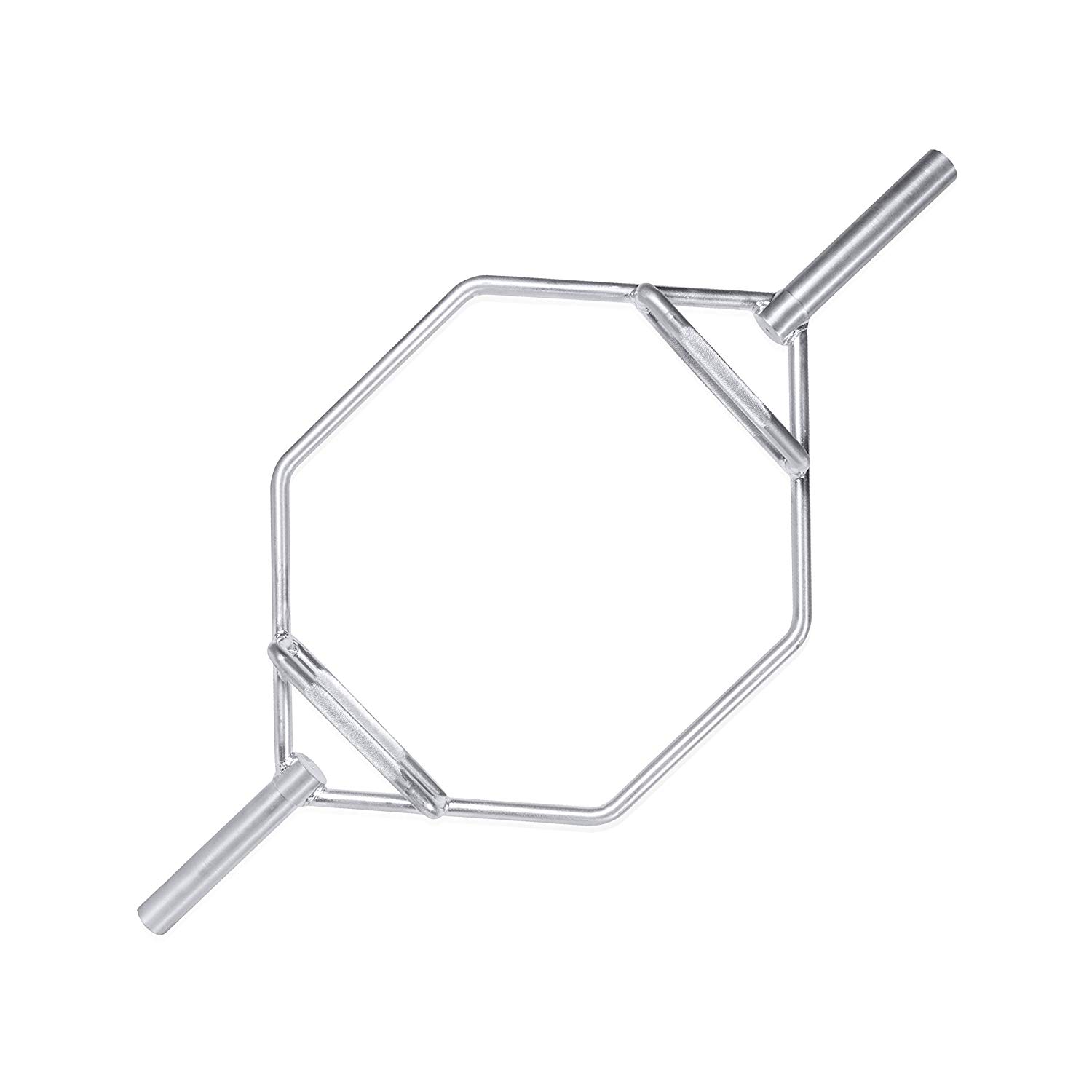
Product Highlights
Build mass and strength in your legs, traps, back and core with the CAP 2-Inch Olympic Zinc Plated Hex Bar. Made with heavy duty alloy steel and sealed with a durable zinc finish, this CAP hex bar is sturdy and dependable.
Pros & Cons
Bottom Line
In a poll on our Garage Gym FaceBook Group, we asked, “What trap bar would you recommend for most people?” A majority of them chose this bar, the CAP Olympic Hex Bar. By far the cheapest bar on our list, but considering it’s a specialty bar, for most, that’s what they want.
Although we wouldn’t agree with everyone who chose the CAP Hex Bar as the best trap bar for most people, we do agree that most could easily get away with owning one of the bars and never consider having to upgrade over the life of their garage gym. The knurling is pretty passive and the sleeve length is short, but during use, most people wouldn’t be able to tell the difference.
If you want a trap bar and just want the cheapest one we recommend, this one’s it. And, you’d likely surprise yourself with just how good it is for the price.
Cheapest Pick Alternative
Titan Olympic Hex Weight Bar
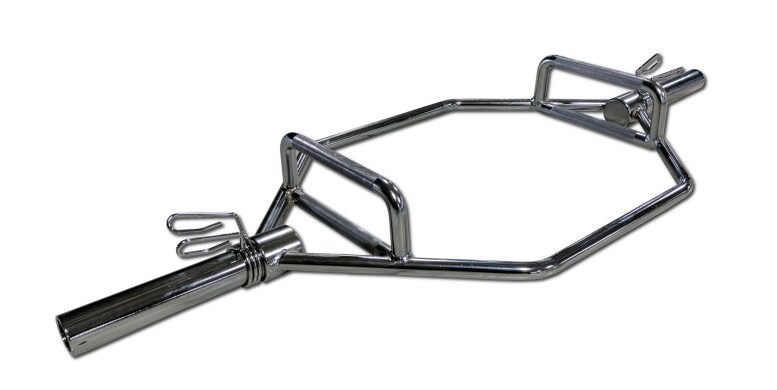
Product Highlights
- Unique dual handle design for targeting and isolating desired muscle groups
- Fits standard 2″ Olympic plates
- Knurled handles for improved grip
- Easy “Flip” design– simply turn the bar over to switch grips
Pros & Cons
Pros
- Medium knurl that provides grip, but won’t shred your hands
- Affordable at just over $125 (with free shipping)
- Durable, and should last a while in your garage gym
Cons
- Very short sleeves
- 500 lb. weight capacity is light, but I’ve seen these handle much more
- Hard chrome can end up chipping over time
Bottom Line
We like this trap bar because it gets the job done at a low price without looking or feeling like it was built for cheap.
The Titan Olympic Hex Weight Bar is essentially the same as our Cheapest Pick, the CAP OB-89HZ Olympic Combo Hex Bar, but often at a higher price. The main difference is the hex bar from Titan Fitness has chrome plating, other than that, they’re identical. We suggest checking both sites before buying to determine which bar has the better price at the time because they’re constantly fluctuating.
If you have points with Titan, this is a great option to use them on. It’s a cheap bar with a ton of versatility available.


